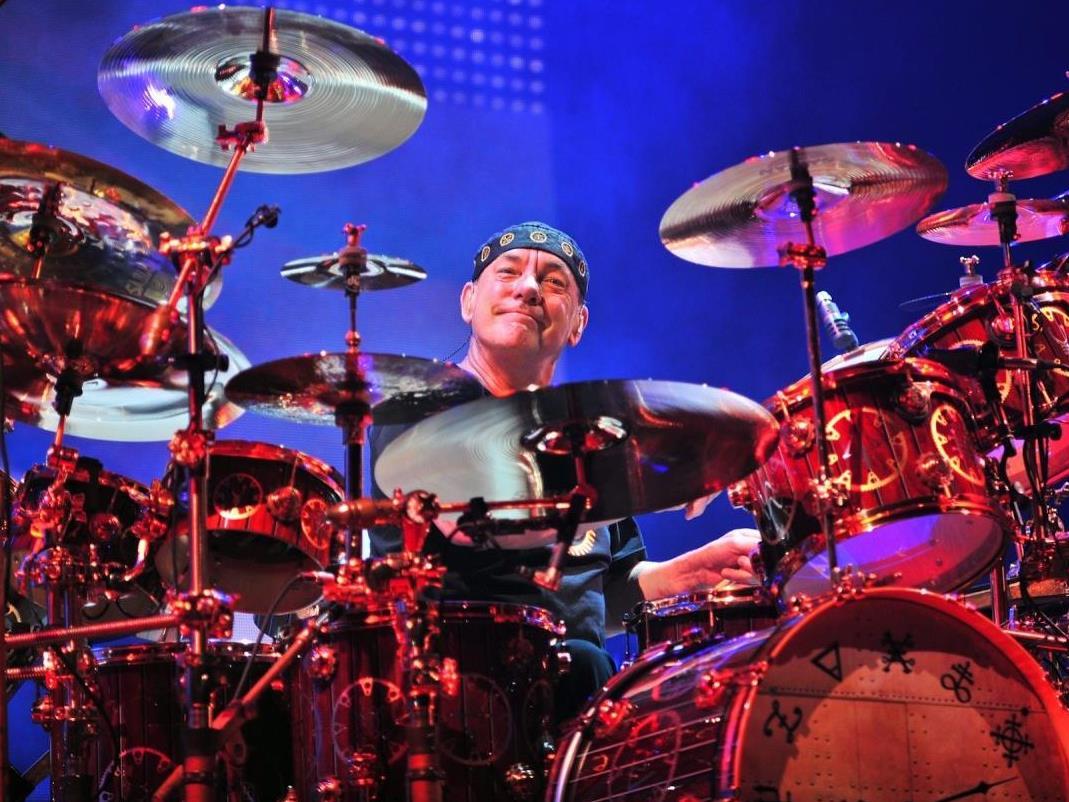Recently retired drummer Neil Peart, aged 63 Image via Rush
NSW Minister for Ageing John Ajaka believes the media gives ageing a bad wrap.
‘How many times have we read articles or watched TV with so called “experts” crying out that the ageing population will burst our country’s bank balance and burden our younger generation with a load they cannot bear?’ he asked audiences at this week’s Arts Health Institute conference The Future of Ageing.
In fact Ajaka sees the ageing population as filled with opportunities, nowhere more so than in the arts where participation and engagement have grown with the passing years.
‘Change is not one-sided. The task for all of us policy-makers, academics, experts, communities and businesses is to seize the opportunities for an ageing population. If we get it right, it will be good for all of us,’ assured Ajaka.
It was a point reiterated by activist author, policy analyst and actress, Patricia Edgar who delivered the Conference’s keynote address. ‘We need to stop talk about ageing and start thinking about longevity.’
She believes that the biggest problem we are facing is not an ageing population but a bloated case of discrimination as stereotypes are not keeping up with the times.
‘When a person is considered old and when they actually are old are two very different questions – the label ambushes us,’ said Edgar.
It is sound advice for cultural organisation, many of which have taken on board with engaged aged and tailored dementia programming. But more can be done. This is an active audience demographic and has great potential to grow our institutions if we just think beyond the stereotypes.
Edgar said just as the 1950s saw the creation of the concept of teenagers as neither children nor adults, the 21st century needs to recognise late middle age, the period between 50 and 75 years, as a new phenomenon. With 90% of the population living to over 70, most in good health, this is a very able and engaged demographic that can make a huge contribution to our social ecosystem.
‘It has become an age of transformation but social, medial and cultural policy has not caught up with this dramatic change in our life cycle. We refuse to accept the roles we are being cast into,’ said Edgar.
They were strong words well received in the room of delegates, and 50 plus speakers committed to thinking differently and eliminating ageism, observed Chairman of the Arts Health Institute (AHI) Shane Carroll.
AHI was founded in 2011 and has grown from an idea into a major employer for the arts. It is this very kind of shift of the variable and thinking active and embedded engagement that is required, and was a point made by the Minister.
‘Researchers believe that increasing the number of Australia’s older than 55 in paid employed by just 5% will increase our GDP by close to 50 billion a year,’ said Ajaka.
‘Importantly, one of key actions of NSW Government’s Ageing Strategy was creative activities. The arts provide an ideal space for older people to socially connect and engage, to explore new things and develop skills,’ the Minister continued.
Ajaka added that one third of people over 65 volunteer their time to causes to make their communities stronger. This has a huge impact on our arts and cultural organisations nationally.
‘The workplace of the future is not only going to require technical skills but it is interpersonal skills that will be the most needed, and the late middle ages have those in spades,’ said Edgar. ‘Many people do want to work for social and economic reasons.’
‘We have got to stop talking about retirement and having a long deserved rest,’ was Edgar’s call to attention.
As organisations we need to be more alert to what older employees can bring, and to value their role beyond mere volunteerism.
‘We are locked together as a homogenous group because it is much easier to disregard us that way,’ added Edgar of a broader perception of the “elderly”. ‘You are not old until you are frail. We are growing in numbers, we have buying power, electoral weight and we are stable employees.’
The NSW Government’s Ageing Strategy introduced in 2012 makes decisive steps forward but more needs to be done, and the conference encourage the arts and culture sector to continue its leading role in this area.






